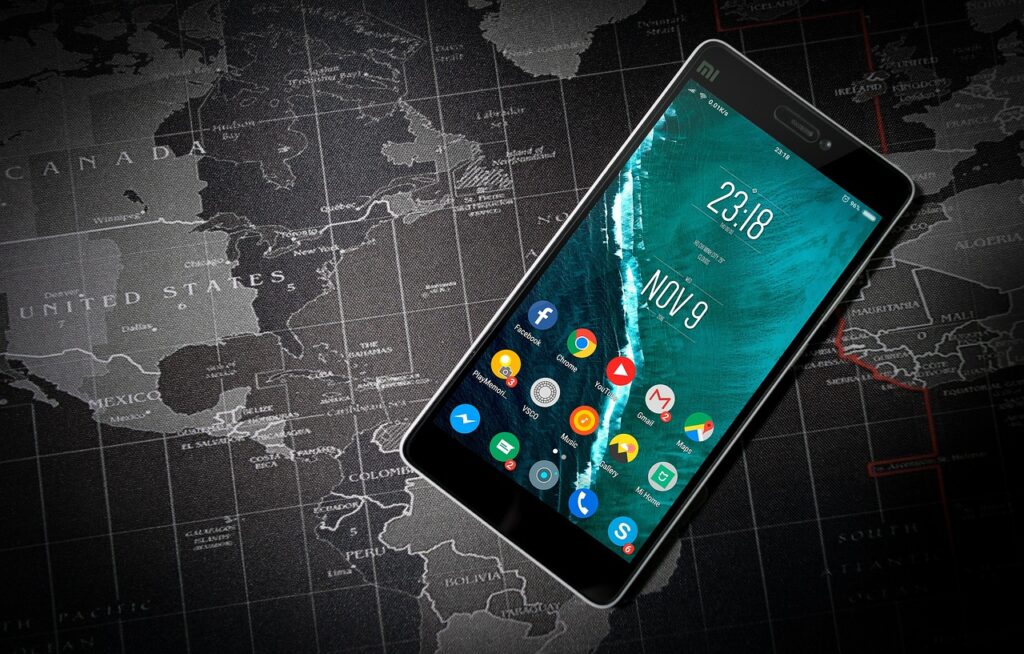Currently, there are more than 300 app stores around the world, and this number continues to increase. Third-party app stores have rapidly emerged as essential players in the ever-evolving landscape of mobile apps, providing an alternative to Google Play and Apple App Store platforms. While a mobile app play store presents various opportunities to both users and developers alike, it also brings specific challenges that need to be considered before leveraging third-party stores for your growth.
This guide will walk through everything you need to know about third-party app stores from benefits/risks analysis through best practices for effectively using them.
What is a mobile app play store?
Alternative app stores are platforms that distribute mobile applications outside the official Google Play and Apple App Store platforms and often offer apps not found elsewhere. Some of the popular mobile app play stores are Amazon Appstore, Samsung Galaxy Store, Aptoide, and Huawei AppGallery.
Third-party app stores have quickly grown popular due to a variety of reasons, such as offering apps removed from official stores or offering regional apps or niche market apps that cater directly to niche audiences. App developers and marketers find them as a crucial distribution channel in regions with lower market penetration from Google or Apple.
Advantages of Using third-party app store
Broader audience reach: One of the most significant advantages of third-party app stores lies in their ability to reach users in areas where Google Play or the Apple App Store don’t play as important a role, like China, where Google Play restrictions limit app distribution capabilities. A mobile app play store such as Huawei AppGallery is crucial for app distribution there.
For example, by January 2024, approximately 1.033 billion individuals were using Samsung smartphones which constituted 14% of the global smartphone user base. This stat indicates how app developers can actually target these individuals if they decide to list their app on Galaxy Store.
Alternative revenue streams: Alternative app stores offer app developers various monetization models that could prove more advantageous for them, including taking smaller commissions on sales or providing flexible in-app purchase options, making these stores attractive options when looking to maximize revenue streams.
Less stringent approval processes: Approving apps through Google Play or Apple App Store can often take months. Third-party stores tend to offer less rigorous approval criteria that enable developers to bring their apps to market faster.
Freedom of choice: The ability to choose which app stores your app will be featured in, combined with choosing your own payment and billing systems and negotiating your own deals with these stores, gives both developers and users the freedom of choice that’s practically unseen in today’s “walled garden” approach to app stores.
Access to niche markets: Third-party app stores often focus on specific niche markets, like gaming apps for regional audiences or apps with customized functionality – making these alternative app stores particularly beneficial to marketers and app developers creating apps targeted towards audiences or markets that fall outside the reach of major app stores. It can give developers greater exposure for their apps on niche stores that cater more directly.
Check these factors before proceeding
Reputation: As stated earlier in the article before, there are over more than 300 app stores in the world today. Not all of them have a good reputation. You do not want to list your app in a mobile app play store that people do not recognize or has a reputation you do not want associated with your app.
Security: It’s predicted that by 2025, the costs associated with cybercrimes will shoot up to $10.5 trillion. Some of the third party app stores allow users to download malicious apps because they may not be doing stringent checks before listing an app on their store. You do not want your apps to appear in third-party stores that customers are afraid to enter.
Lower visibility: While third-party app stores can help reach niche markets, they often have a smaller user base than the major stores. It means that apps may receive less visibility and fewer downloads compared to being listed on Google Play or the Apple App Store.
As long as you choose the mobile app Play Store that has a good name and reputation in the market, like Samsung, Vivo, and Huawei, you can enjoy all the benefits that were discussed in the previous segment.
Best Practices for Utilizing Third-Party App Stores
If you are planning on distributing the app through a mobile app play store, here are a few best practices that should help ensure its success:
Research about the mobile app play store: Before submitting your app to any third-party store, conduct extensive due diligence by researching its reputation, user base, and security features. Make sure it’s an established platform with an excellent record for protecting user data while offering developers positive experiences.
Optimize your app for different markets: When publishing apps through third-party stores, particularly international ones, localization becomes crucial. It involves translating app content, altering pricing strategies, and tailoring marketing efforts for local users – among other steps.
Implement robust security measures: In order to keep both users and yourself secure, implement robust security measures like encryption, secure data storage, and regular updates of the app itself. Furthermore, be sure to test regularly for vulnerabilities so as to reduce risks related to malware attacks on the application itself.
Monitor user feedback and reviews: User feedback is integral for improving your app and maintaining an exceptional presence while in third-party stores. Keep tabs on user reviews and feedback, respond quickly when problems or complaints arise, and build trust among your user base while inspiring positive word-of-mouth advertising.
Utilize store-specific promotions: Many third-party app stores provide promotional tools that can increase the visibility and downloads for your app. Take advantage of featured app sections, discount offers, and in-app advertising to generate additional downloads and engagement with potential downloads and subscribers.
Stay up-to-date with legal requirements: Compliance is of utmost importance when expanding an app across different markets, so be aware of and compliant with any legal or regulating requirements and restrictions in each region your app is offered – this may include data privacy laws, payment processing rules or content restrictions that affect it.
Diversify your distribution channels: While alternative app stores can be valuable resources for app distribution, it’s wiser not to rely solely on them for app promotion and sales. Instead, ensure your app can also reach wider audiences by placing it on Google Play, the Apple App Store, and other relevant platforms. It is one way to avoid potential risks associated with marketing your app on one platform alone and this can also help you reach more people at the same time!
The future of third-party app stores
As mobile app ecosystems continue to change, third-party app stores will likely play an increasing role. Due to rising competition within app markets, developers will seek alternative distribution channels in order to reach out and maximize the app’s potential audience. As more consumers gain an awareness of any risks related to third-party app stores, we should see improvements in security measures and user trust measures as a result of increased consumer knowledge about them.
Staying ahead of the game for developers means constantly exploring new opportunities in the app distribution landscape. App developers and marketers that strategically leverage third-party app stores can open doors into new markets, increase revenue streams, and establish more resilient app businesses.
Conclusion
Third-party app stores offer an incredible opportunity for expanding the reach of your app, but careful thought must go into their use and strategic planning. By understanding their benefits, risks, and best practices associated with them you can make informed decisions aligning with your business goals.
Ready to take it one step further? Explore how mobile OEM advertising solutions from us can enhance performance across various platforms while reaching a global audience – contact us now to start this exciting adventure!



